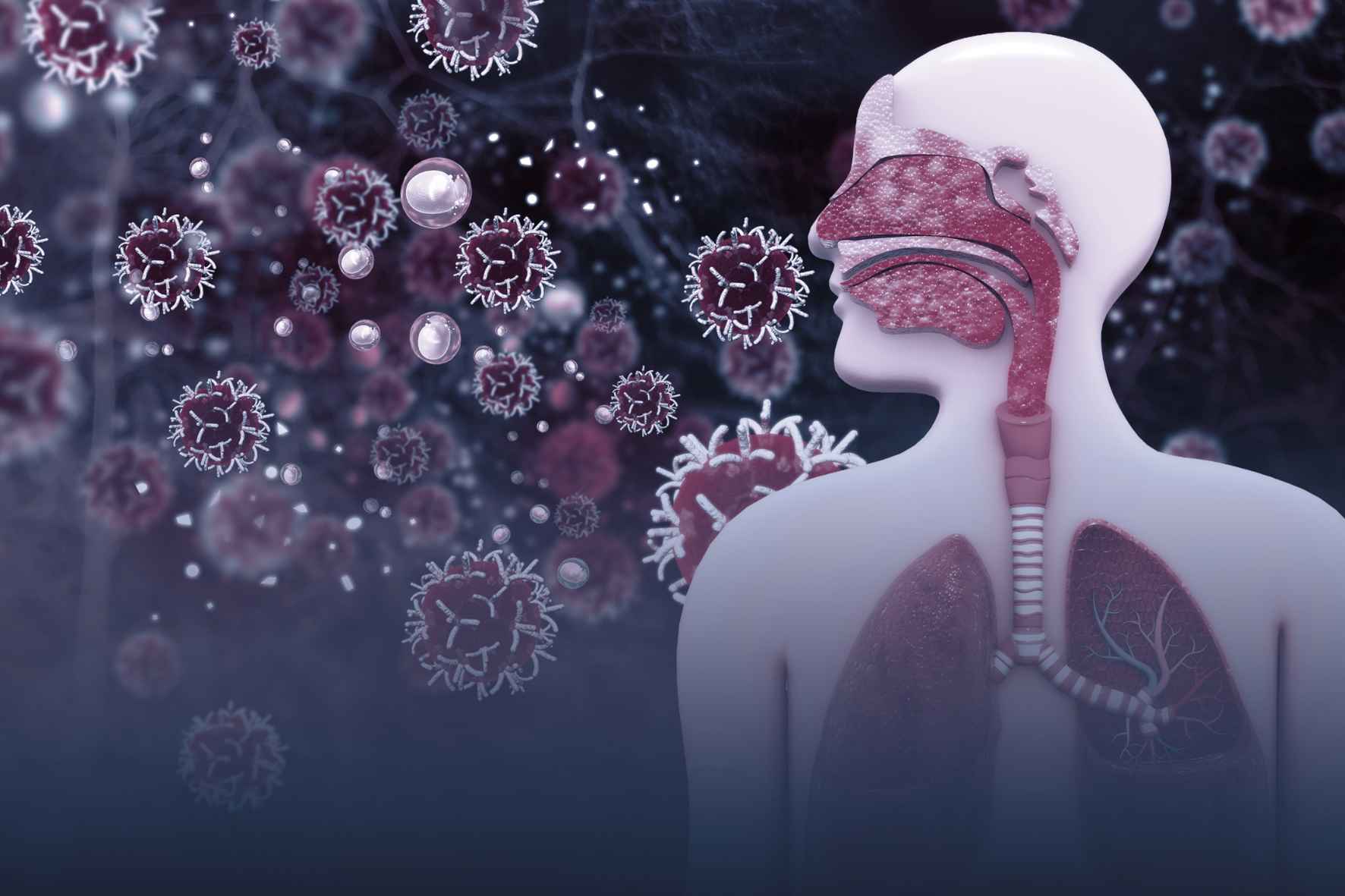As we navigate flu season, a lesser-known but equally impactful virus has been making its presence felt—the HMPV virus, or Human Metapneumovirus.
Although not as widely recognized as influenza or RSV, this virus has been a significant cause of respiratory illnesses worldwide. Understanding its symptoms, transmission, and preventive measures can help you stay ahead and protect yourself and your family.
Table of Contents
What is the HMPV?

The Human Metapneumovirus (HMPV) is a respiratory RNA virus belonging to the Pneumoviridae family. Although discovered in 2001 in the Netherlands, retrospective serological studies reveal that HMPV has been circulating globally for over five decades.
Why Does HMPV Matter?
HMPV is responsible for a wide range of respiratory illnesses, from mild upper respiratory infections to severe lower respiratory diseases. Despite its long-standing presence, the virus predominantly affects vulnerable populations such as young children, older adults, and individuals with pre-existing health conditions.
Quick Facts About HMPV Virus:
- Global Spread: Reported in numerous countries for many years.
- Peak Period: Most infections occur in late winter and early spring, especially in the northern hemisphere.
- Subgroups: The virus has four subgroups: A1, A2, B1, and B2, all of which exhibit similar severity.
- Historical Insights: Retrospective research indicates its presence in human populations for over 50 years before its formal discovery.
- Severity Predominance Of Sub-types: Current research indicates that there is no significant difference in the predominance or severity levels among these strains; they show similar characteristics without detectable differences.
When and Where Does HMPV Virus Strike?
The HMPV virus thrives during colder months, with peak infections noted in late winter and early spring. Its seasonality aligns closely with other respiratory viruses like influenza and RSV. Global data highlight its prevalence, making it a significant concern in both developed and developing nations.
Is HMPV Virus a Cause for Concern?

Research suggests that HMPV virus is associated with mild to moderate infections in the upper and lower respiratory tracts. While most cases result in symptoms primarily affecting the upper respiratory tract, the virus can also lead to severe infections in some individuals, producing symptoms in the lower respiratory tract.
However, in some cases, it can lead to severe complications, especially in high-risk groups such as young children, older adults, and those with pre-existing conditions.
Who is Most Vulnerable to HMPV Virus?

Children:
Prevalence: Second most common cause of lower respiratory infections in children.
Hospitalizations: Responsible for 5-10% of pediatric hospitalizations globally.
Infection Rates: Research indicates that most children will contract HMPV by the age of five, with nearly all being infected by the age of ten.
High-Risk Infants: Infants under six months are three times more likely to require hospitalization than older children.
At-Risk Groups: Individuals with cardiovascular or respiratory conditions, Immunocompromised, patients, Older adults over 50 years.
Prevalence in Older Adults: Around 4.5% of adults over 50 experience HMPV-related respiratory illnesses annually.
How HMPV Virus Infection is Transmitted?

Transmission Method:
HMPV is spread by respiratory droplets. These are tiny aqueous particles produced by:
- Exhalation
- Coughing
- Sneezing
These droplets, containing infectious particles, can transmit the virus when inhaled by healthy individuals.
Incubation Period:
After exposure, it typically takes 3-5 days for symptoms to appear. However, this duration can vary depending on individual immunity and health conditions.
Diagnosing HMPV: Key Insights

Clinical Diagnosis:
Symptoms-Based Evaluation: Doctors often diagnose HMPV based on manifesting symptoms alone, making clinical evaluation crucial.
Preferred Testing Methods:
RT-PCR: The most reliable diagnostic test for detecting HMPV’s genetic material.
Rapid Culture Techniques: While traditional culture methods are challenging, advanced techniques aid faster identification.
HMPV presents with symptoms that are often similar to other respiratory infections, affecting both the upper and lower respiratory tracts, such as:
- Common cold
- Seasonal Flu
- Influenza
- Respiratory Syncytial Virus (RSV)
- Parainfluenza
- Adenovirus
Non-infectious conditions like Asthma and COPD can also mimic HMPV symptoms, making accurate diagnosis crucial.
Recognising Symptoms Of HMPV: From Mild to Severe

Mild Infection Symptoms:
In cases of mild HMPV infection, individuals may experience:
- Sore throat
- Fever
- Nasal congestion
- Cough
Severe Infection Symptoms:

When the infection progresses to a severe form, particularly affecting the lower respiratory tract, additional symptoms may include:
- Wheezing
- Dyspnea (shortness of breath)
- Hypoxia (low oxygen levels)
- Bronchiolitis
- Acute asthma exacerbations
- Pneumonia
- Chronic Obstructive Pulmonary Disease (COPD)
These severe symptoms indicate the need for immediate hospitalization.
Additional Symptoms in Adults:
Some other symptoms can also manifest and can become severe, particularly in adults, which may become severe:
- Diarrhea
- Nausea and vomiting
- Acute otitis media (ear infection)
How to Protect Yourself from HMPV Virus (Preventive Management):

By adopting and maintaining a few healthy habits, you can significantly reduce the chances of contracting HMPV and other respiratory diseases. Here are some effective practices:
Adopt Healthy Habits:
- Wash Hands Regularly: Use soap or alcohol-based sanitizers.
- Wear Masks: Especially in crowded spaces or around sick individuals.
- Practice Respiratory Hygiene: Cover your mouth and nose when sneezing or coughing.
- Maintain Distance: Stay away from individuals showing symptoms of respiratory illnesses.
- Avoid Touching Your Face: Minimize contact with your mouth, nose, and eyes.
- Use Separate Utensils: Avoid sharing food or utensils.
Boost Your Immune System:
- Eat a balanced diet rich in fruits, vegetables, and whole grains.
- Stay hydrated.
- Get adequate sleep and manage stress.
Treatment and Recovery: What To Expect

However, If you still contradict the symptoms then you should focus on the below:
- Hygiene Practices: Maintain basic hygiene and sanitation, and avoid crowded or outdoor places to prevent the spread of the virus to others.
- Symptom Management: Focus on rest, a healthy diet, and sufficient water intake and over-the-counter medication to support recovery.
- Consult a Physician: Always seek medical advice before starting any medication to ensure appropriate treatment.
- Emergency Symptoms: If you experience severe symptoms such as , high fever, breathlessness or bluish discoloration of the skin, seek emergency medical attention immediately.
Mild Cases:
In mild cases of HMPV infection, the duration of illness typically ranges from 7 to 10 days.
Severe Cases:
Severe cases may require a longer duration for full recovery, often extending beyond the typical timeframe.
Conclusion: A Balanced Perspective on HMPV Virus

While HMPV is not a new virus, it remains a significant health concern, especially for vulnerable populations. The key to mitigating its impact lies in awareness, preventive measures, and timely medical intervention.
By adopting healthy habits, staying informed, and seeking prompt care when necessary, you can protect yourself and your family from the risks associated with the HMPV Virus.
This flu season, let’s prioritize health and well-being by staying informed and taking proactive measures. Together, we can minimize the impact of respiratory illnesses like the HMPV virus, additionally learn about influenza virus to stay informed.
Have you encountered symptoms of the HMPV virus or know someone who has? Share your experiences in the comments below and share this information blog with someone who may need reliable guidance on staying safe this flu season.





3 Comments
Your comment is awaiting moderation.
CreatBot D600 Pro 2 Industrial 3D Printer is a advanced industrial 3D printer designed for engineers demanding accuracy, reliability, and flexibility in 3D printing. As part of the D600 series, it incorporates a large build volume, advanced dual extrusion technology, and top-tier features suitable for industrial use and varied materials.
Overview of the CreatBot D600 Series
The CreatBot D600 and D600 Pro establish new standards for large-scale 3D printers solutions. With a build volume of 600 ? 600 ? 600 mm, these industrial 3D printers cater to a wide range of industrial 3D printing demands, from large model prototyping to end-use production. The D600 pro series and the latest D600 Pro 2 introduce further enhancements in performance and material compatibility.
Key Features and Advantages
Industrial-Grade Large Build Volume
Build volume: 600 ? 600 ? 600 mm
Ideal for large-scale 3D printer projects and industrial 3D printing
Supports engineering-grade materials and complex prototypes
Dual Extruder System and High-Temperature Printing
4th generation 1.75mm dual extruders and hotends for multi-material printing
Right and left extruder design for flexible printing
Supports high performance 3D materials, including PLA filament, nylon filament, carbon-fiber, and more
Maximum nozzle temperature: up to 420°C (high temperature)
Heated build chamber for premium applications
Accuracy, Speed & Dependability
Professional 3D print quality with accurate layer resolution
Advanced motion system for fast printing and robust performance
Consistent printing speed up to 120 mm/s
Reliable operation for continuous industrial use
Compatible Materials and Filaments
Broad Filament Support
Works with a broad spectrum of filament: PLA, ABS, PC, PETG, PVA, nylon, carbon-fiber, and more
Designed for technical materials and functional prototyping
Advanced dual extruder 3d printer enables multi-material and soluble support printing
Applications: From Prototyping to Production
The CreatBot D600 Pro 2 and D600 Pro 3D printer serve a diverse set of applications:
Rapid prototyping and large format 3D print models
Functional parts for automotive, aerospace, and engineering
Tooling, jigs, and fixtures for industrial production
Art, architecture, and creative projects requiring large-scale industrial 3d printing
Specs
Model: CreatBot D600 Pro 2, D600 Pro, D600
Build volume: 600 ? 600 ? 600 mm
Extruders: Dual extruder, 4th generation 1.75mm dual extruders and hotends
Maximum extruder temperature: 420°C
Bed temperature: up to 100°C
Filament diameter: 1.75 mm
Layer height: 0.05 – 0.3 mm
Supported filament: PLA, ABS, PC, PETG, PVA, nylon, carbon fiber, engineering-grade materials
Print speed: up to 120 mm/s
Enclosure: Heated, for improved material properties
Interface: Touchscreen interface
Supported file types: STL, OBJ, AMF
Comparison: D600, D600 Pro, and D600 Pro 2
Key Differences
D600: Entry-level industrial large scale 3d printer for basic applications
D600 Pro: Enhanced with heated chamber, auto bed leveling, and wider material support
D600 Pro 2 (pro version): Adds higher print speed, improved reliability, and HS (high speed) configuration
Other CreatBot Models
CreatBot D1000 HS for even larger build volumes
CreatBot 3D printer includes industrial and professional 3d printer solutions
FAQ
What materials can the CreatBot D600 Pro 2 print?
The D600 Pro 2 is compatible with a wide range of filament types including PLA, ABS, PETG, PC, nylon, carbon-fiber, and other engineering-grade materials.
What is the maximum build volume of the D600 Pro 2?
The build volume is 600 ? 600 ? 600 mm, supporting large-scale and industrial 3d printing needs.
Dual Extruder and High-Temp Support on D600 Pro 2
Yes, it is equipped with dual extruder technology and reaches up to 420°C for high-temperature printing.
What differentiates the D600 Pro 2 from the D600 Pro?
The Pro Version offers higher printing speed, improved reliability, and the new HS (high speed) option.
Summary
The D600 Pro 2 and the CreatBot D600 Pro industrial professional set the benchmark in the industrial large scale 3d printer category. With exceptional build size, robust dual extrusion system, compatibility with engineering-grade materials, and high performance across applications, they empower businesses and engineers to achieve new heights in industrial 3D print.
d600 series
4th generation 1.75mm dual extruders
industrial 3d
build volume
[…] Also If you want to read about Recent outbreak related to HMPV Virus you can follow the link here. […]
Really Helpful information shared we needed this at this hour to stay informed, Thank you Capitalist Health !!
Thank you for your kind words and recognition of Capitalist Health; we appreciate your support!